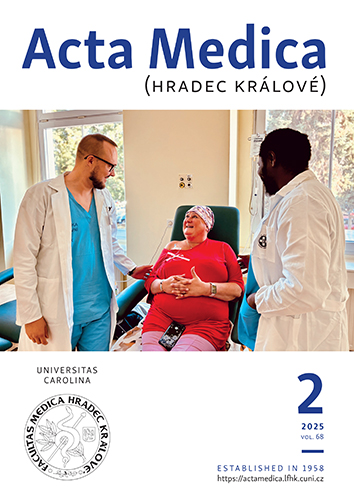ACTA MEDICA, Vol 56 No 3 (2013), 117–123
What is the Role Body Sway Deviation and Body Sway Velocity Play in Postural Stability in Older Adults?
Jitka Jančová Všetečková, Nicholas Drey
DOI: https://doi.org/10.14712/18059694.2014.19
zveřejněno: 23. 07. 2015
Abstract
This cross sectional study focused on how Postural Stability (PS) indicators: body sway deviation (BSD) and body sway velocity (BSV), change with age and their association with levels of social and physical activity. Observational study: 80 older adults (aged: 60–96) were purposefully recruited from two sources: the University of the Third Age (TAU) (n = 35) and a residential care home (CH) (n = 45). Differences in the indicators of PS, approximated through Centre of Pressure (COP) measurements, were assessed by the Romberg Stance Test (Test A) subsequently repeated on 10 cm foam surface (Test B), using a Kistler® Dynamometric Platform. The RCH Group was older, had higher BMI and was less socially and physically active, showed more body sway in all indicators compared to TAU group. For all participants body sway velocity (BSV) was significantly correlated with age. The strength of correlation of body sway deviation (BSD) with age was also significant but not as strong. The findings indicate in line with previous studies that deterioration in BSV is associated with poor PS more than deterioration in BSD.
klíčová slova: Body sway deviation (BSD); Body sway velocity (BSV); Postural stability (PS); Ageing; Platform stabilometry; Centre of pressure (COP)

What is the Role Body Sway Deviation and Body Sway Velocity Play in Postural Stability in Older Adults? is licensed under a Creative Commons Attribution 4.0 International License.
210 x 297 mm
vychází: 4 x ročně
cena tištěného čísla: 150 Kč
ISSN: 1211-4286
E-ISSN: 1805-9694
